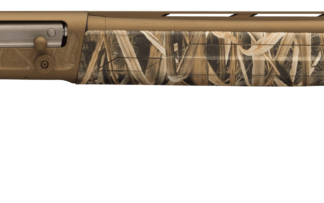The Browning Hi-Power is a solitary action, self-loader handgun available in the 9mm and .40 S&W calibers. It was based on a plan by American firearms designer John Browning and finished by Dieudonné Saive at Fabrique Nationale (FN) of Herstal, Belgium. Browning passed on in 1926, several years prior to the plan being finalized. FN Herstal initially named the plan the “High Power”, which alludes to the 13-round magazine capacity, almost two times that of different plans at the time, like the Luger or Colt M1911.

Is the Browning 1911 a decent gun?
In fact, Browning claims that many clients have said the 1911-380 operates more reliably than their high-end, standard size browning 1911 . Staffers who handled and discharged the gun viewed it as enjoyable to shoot, easy to manipulate and fast to action — qualities not normally associated with. 380 ACP handguns.
Design:
The Browning Hi-Power has gone through nonstop refinement by FN since its presentation. The guns were originally made in two models: an Ordinary Model with fixed sights and an Adjustable Rear Sight Model with a tangent-type rear sight and a wooden shoulder stock. The adjustable sights are as yet available on commercial adaptations of the Hi-Power, although the shoulder stock mounts were suspended during World War II. In 1962, the plan was changed to replace the internal extractor with an external extractor, further developing reliability.
Standard Hi-Powers are based on a solitary action plan. Not at all like present-day twofold action self-loader guns, the Hi-Power’s trigger isn’t associated with the hammer. Assuming a twofold action gun is carried with the hammer down with a round in the chamber and a loaded magazine installed, the shooter may discharge the gun either by essentially pressing the trigger or by pulling the hammer back to the positioned position and then crushing the trigger. In contrast, a solitary action gun can be discharged with the hammer in the positioned position; this is generally done when a loaded magazine is embedded and the slide cycled manually. In a similar manner as the M1911, the Hi-Power is in this way typically carried with the hammer positioned, a round in the chamber and the safety catch on (a carry mode frequently called ready for business in the United States or “made ready” in the UK, or now and again called condition one).
The Hi-Power, in the same way as other Browning plans, operates on the short-pull back standard, where the barrel and slide initially withdraw together until the barrel is opened from the slide by a cam arrangement. Not at all like Browning’s earlier Colt M1911 gun, the barrel isn’t moved vertically by a flipping join, yet instead by a hardened bar which crosses the frame under the barrel and contacts a space under the chamber, at the rearmost part of the barrel. The barrel and slide withdraw together for a brief distance however, as the opening engages the bar, the chamber and the rear of the barrel are drawn downward and halted. The downward development of the barrel disengages it from the slide, which goes on rearward, extracting the spent case from the chamber and catapulting it while also re-positioning the hammer. After the slide reaches the constraint of its travel, the backlash spring presents it again, taking a new round from the magazine and pushing it into the chamber. The cam opening and bar move the chamber upward and the locking hauls on the barrel reconnect those in the slide.

